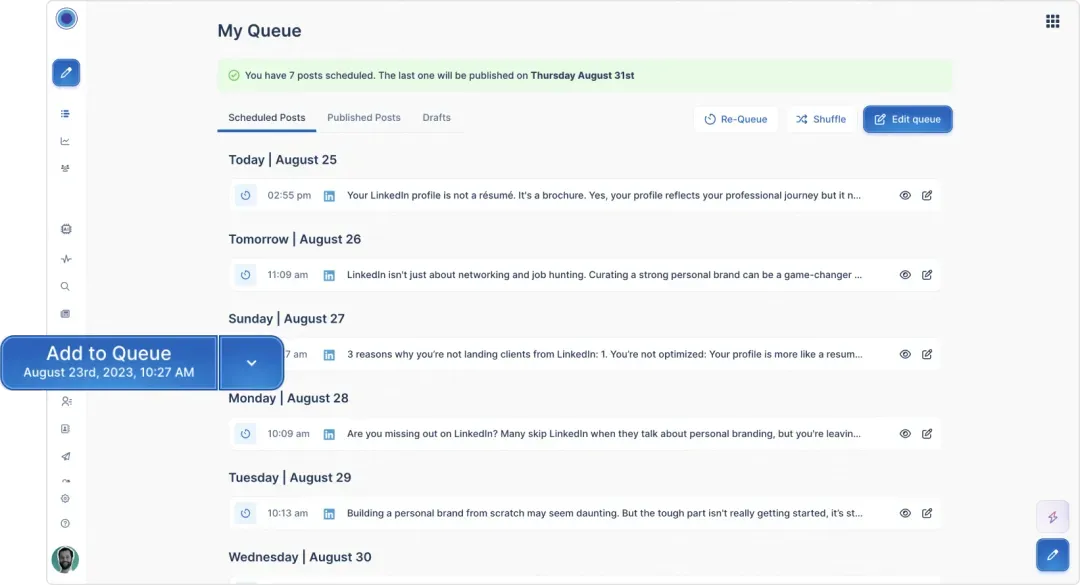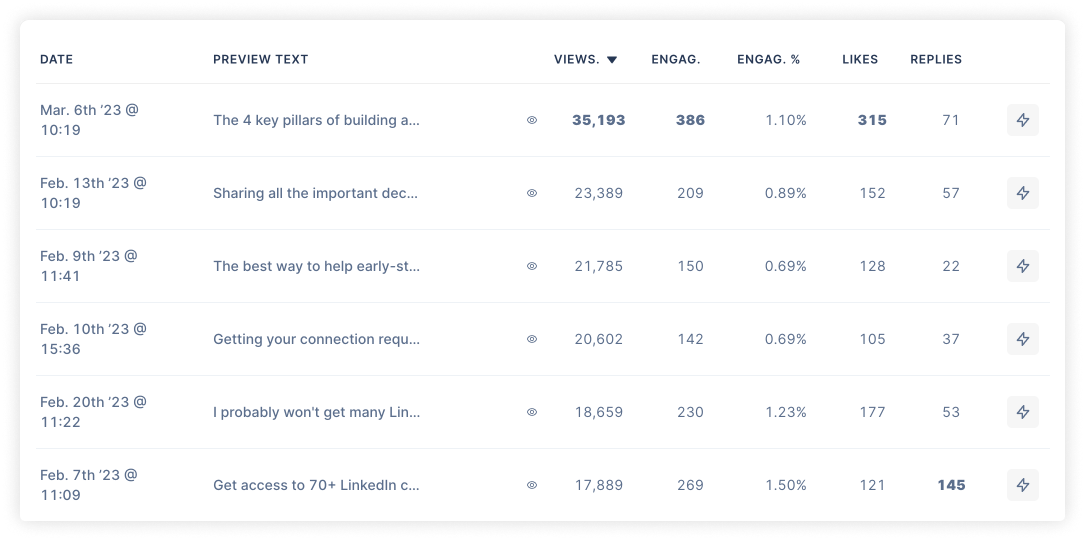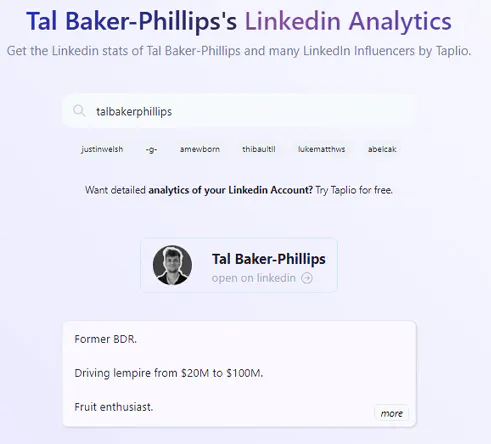Every week, 40% of LinkedIn’s visitors engage with a page organically.
So you’ll need the best LinkedIn marketing strategies to be the top choice.
It’s not enough to have the perfect content, you also need to implement certain strategies to make sure that your content stands out and reaches as many people as possible.
Choosing when to post is crucial.
Factors that impact LinkedIn engagement
First of all, you should define your LinkedIn strategy.
Once you’ve defined your target audience and niche, and created your content you can move on to publishing.
If you need some help to define your LinkedIn strategy, check out this video and learn how to do it in 9 simple steps. ⬇️
When scheduling LinkedIn posts, you must be aware of your target audience’s behavior, trends, and patterns to ensure your content reaches them first.
Think about your industry too and their regular schedule, as a sales rep will most likely have a very different schedule than someone who works in healthcare.
But let’s take a look at factors that affect engagement concerning time and schedules.
When do people usually check our social media?
On our work breaks, when there’s not enough time to wind down completely and binge-watch an entire Netflix series, but when we just want to scroll through our phones.
So it’s no surprise that engagement picks up during mid-morning (coffee breaks), lunch breaks, and some slots during the afternoon (typically when work starts to lag a little bit).
Commute hours are also a goldmine of engagement
Weekends get a lower engagement as most people tend to be out and about.
What’s the best time to post on LinkedIn?
| Monday | Tuesday | Wednesday | Thursday | Friday | Saturday | Sunday |
| 14.00-16.00 | 12.00-16.00 | 12.00-16.00 | 11.00-16.00 | 11.00-15.00 | 09.00-11.00 | 09.00-11.00 and 22.00-23.00 |
After comparing different analysis, we have concluded that the best time to post is in fact during the weekdays, Monday to Friday.
During these days, make sure you post relevant content in your niche. Content that is packed with value, insights, trends, and advice.
Weekends receive slighter engagement, but if you choose your time correctly, you can still have considerable engagement on your posts. Although we do suggest you keep your lighter posts to the weekends. The short and snappy ones, with a lighter tone and content.
The best time frames to post on LinkedIn are Monday to Friday between 9 am and 5 pm.
These are the times in which most people are up and working.
However, it is also important to consider your time zone. Make sure that the times you post are also adapted to other relevant contacts and connections you wish to reach in other parts of the world.
Let’s look into each day a little closer.
Monday
14.00-16.00
Bear in mind Monday mornings start with quite a busy and tight workload, as emails may have piled on during the weekend, the work week has to get organized, and most companies set their meetings during Mondays to discuss the week.
Make good use of “the Monday morning blues” and try and post uplifting news, new trends that will instil a sense of hope in your perspective readers, and fun anecdotes of how you overcame a pain point.
According to SocialPilot, the optimal time to post on Mondays is 11.00.
Tuesday
12.00-14.00
On Tuesdays, most people tend to get their week sorted, so mornings are less pressure-packed and they are able to move swiftly through the morning.
Optimal posting times on Tuesdays tend to be around lunchtime.
Wednesday
12.00-16.00
Again, we are still halfway through the week. Workloads stay consistent and the best posting times surround lunchtime.
Thursday
11.00-16.00
Thursday is one of the best days of the week to post your content on LinkedIn.
The week is ending, work gets lighter, and the time frame expands slightly. Most people have all of their work sorted and tend to welcome the weekend with a more relaxed mindset, leading them to consume more content on social media.
Friday
11.00-15.00
Alongside Thursdays, Fridays are one of the best days to post content.
The time frame on Fridays is going to close down a little earlier, as most workers are going to get through their last hours as quickly as possible to close the week and sign off until Monday.
Nevertheless, engagement on Fridays tends to increase.
Saturday and Sunday
Weekends are certainly not the optimal days for LinkedIn engagement, however, if you wish to post these days try posting mid-morning (09.00-11.00) or later at night (23.00).
Try posting before lunch dates and afternoon plans. After all, we all enjoy a nice scroll through social media during that relaxing cup of coffee.
Late nights are also good when prospective readers wind down and rest completely.
The best thing is to have all your content ready and schedule it’s publishing with a tool such as Taplio.
This will avoid stressing over posting times overlapping with your daily workload and forgetting to post. You will also be able to see how your LinkedIn week will look, so you can adjust further engagement to suit the topics of your upcoming posts.

LinkedIn analytics tool
It is always best to analyze how your strategy is performing and adjust, rather that set your times in stone and hope that they get better.
The best way to do this, is by using a LinkedIn Analytics tool, such as Taplio.

With Taplio you will get detailed LinkedIn post performance statistics such as engagement, engagement rates, likes, replies, and much more.
You can easily compare all of your posts and how each of them performed to see if your current strategy is getting the desired results.
You can also check on how your favorite content creators are performing with Taplio lookup.

This will allow you to draw inspiration and see what they are doing and how you can improve to increase your metrics. By checking in on your competitor’s analytics you will better understand what resonates with a LinkedIn audience and adjust your strategy to achieve similar results.
Key takeaways
We conclude that the best days to post are Mondays to Fridays, with an engagement increase on Thursdays and Fridays.
These are the days when you should push your best articles. Make sure you stick to posting between 09.00 and 17.00.
Avoid posting late at night, you don’t want your carefully written posts to go unnoticed.
Although engagement decreases considerably during the weekends, don’t dismiss them completely. Rather, save your lightest posts for the weekends.
Finally, schedule your posts and make sure they go out during the week, making use of work breaks and commutes
Define your target audience and adhere to their regular schedule.
Your source of actionable outreach tips and strategies that will help you get replies and grow your business.

